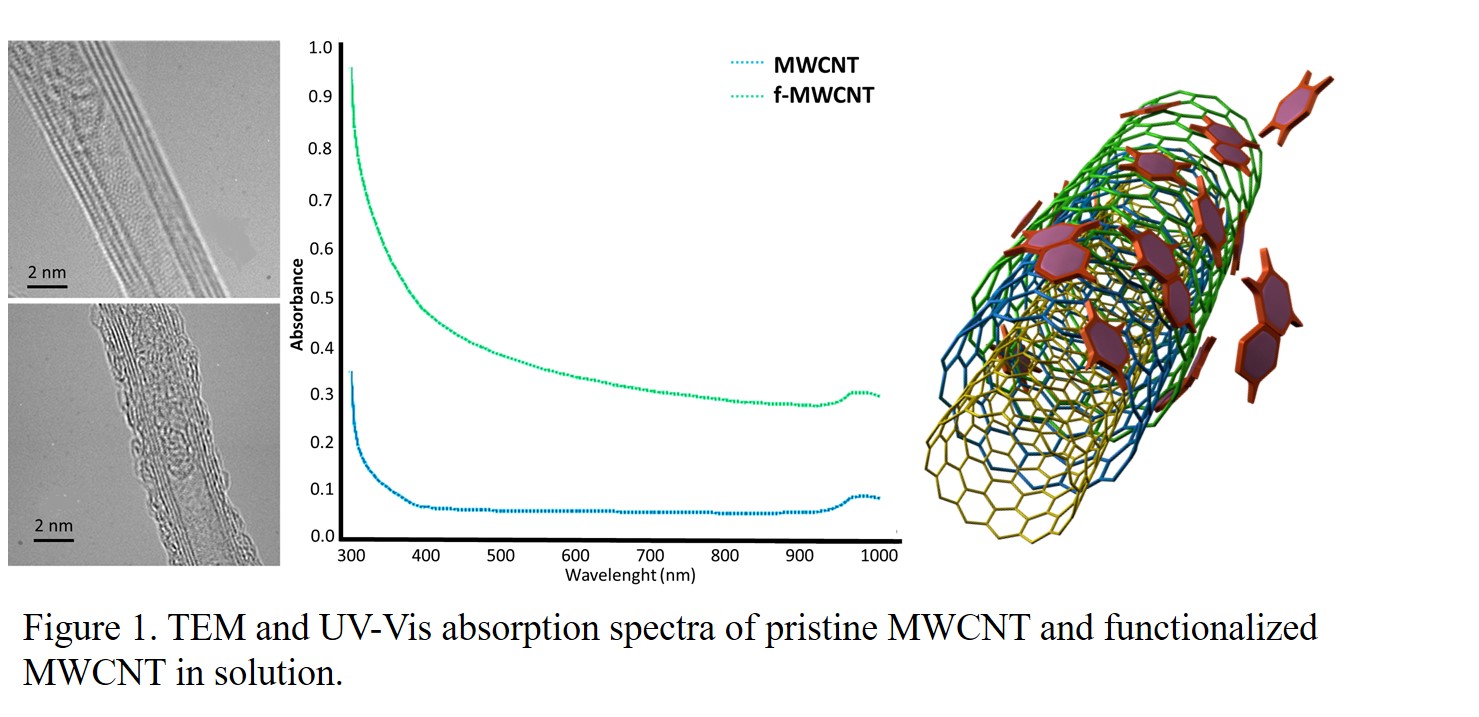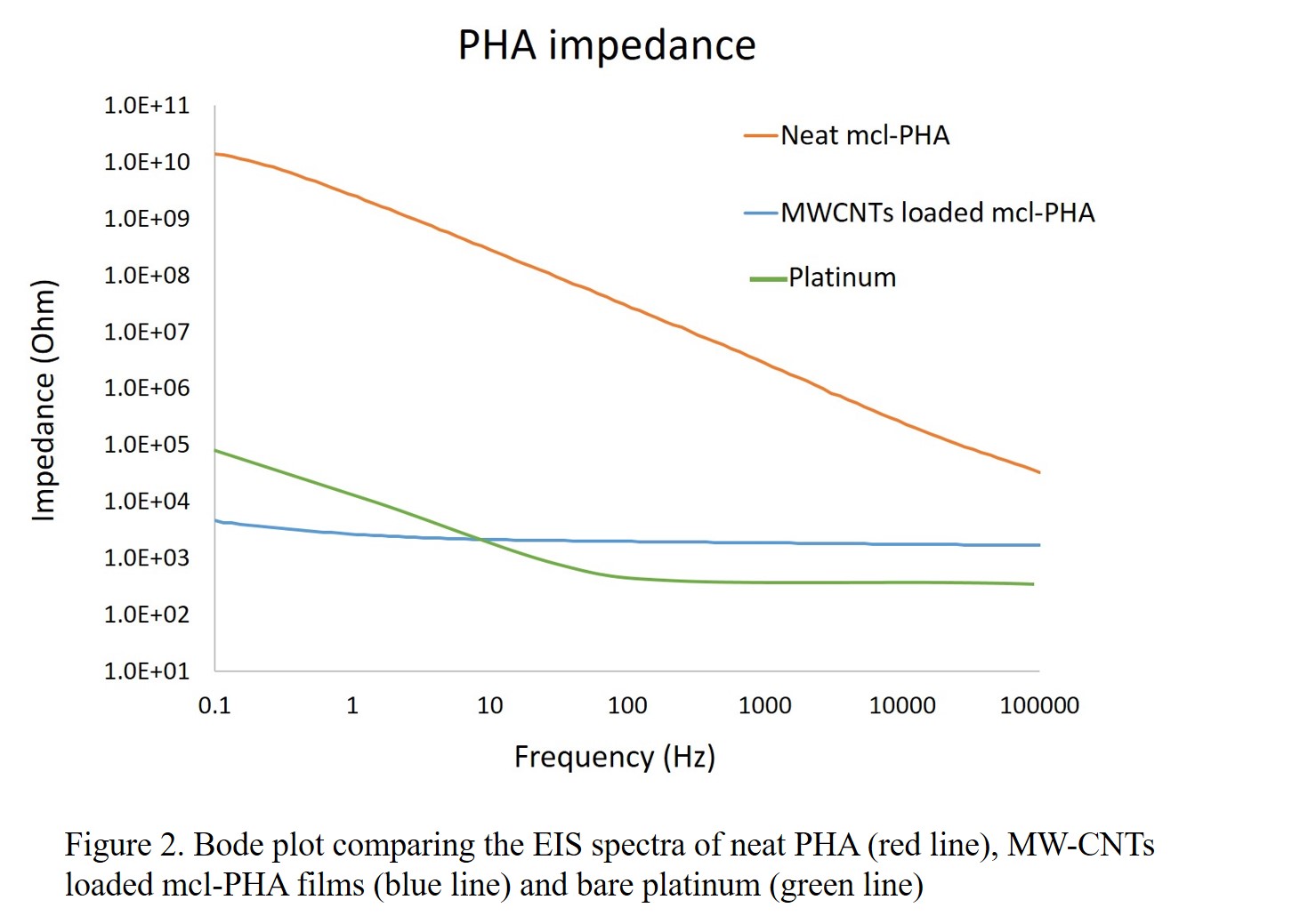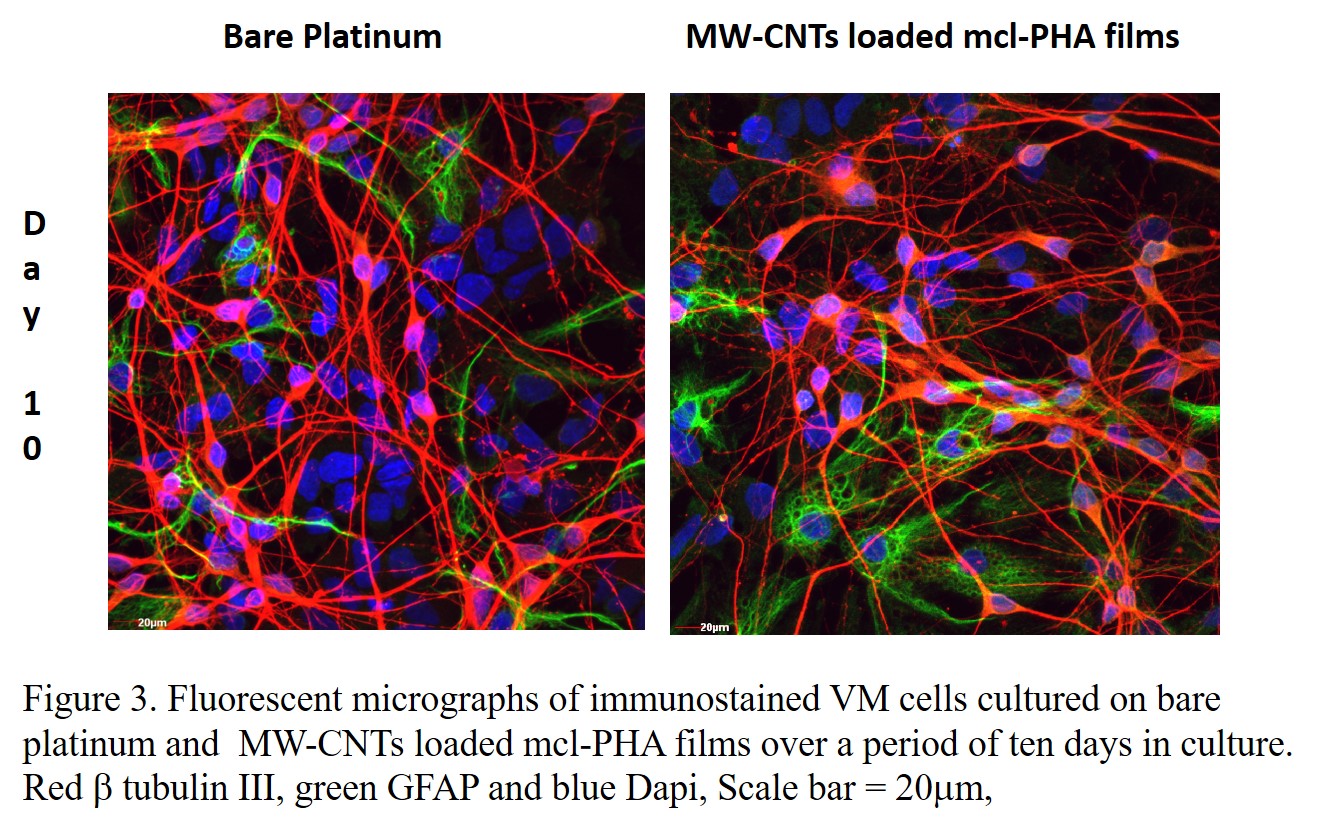Introduction: Despite the efforts to develop biomimetic neuroprosthetic electrodes, the mechanical properties of brain tissue and the implanted electrode present a stiffness mismatch at the tissue-electrode interface inducing trauma, which causes gliosis, neuronal lost and a significant increase of the electrical impedance at the implant/tissue interface[1]. Medium chain-length polyhydroxyalkanoates (mcl-PHAs) are elastomeric materials that have been recently developed to address the growing demand for highly elastic and biodegradable materials in the biomedical field, providing tunable characteristics in terms of physical, mechanical properties, and degradation rates[2]. This study investigates mcl-PHA nanocomposites formed through the incorporation of multi-walled carbon nanotubes (MW-CNTs) and presenting a range of physical-mechanical, electrical and biological properties, as a potential coating for neuroelectrodes with viscoelastic properties approaching those of neural tissues.
Experimental Methods: MW-CNTs loaded mcl-PHA films were prepared by solvent casting, the nanocomposite thermal transitions and mechanical properties were analyzed by means of DSC and tensile tests, respectively. In addition, the MW-CNTs loaded mcl-PHA films were characterized by UV-Vis absorption spectroscopy and TEM to ascertain the material morphological properties, and electrochemical impedance spectroscopy (EIS) to assess the nanocomposite electrical profile. The cytocompatibility of the mcl-PHA/MW-CNTs nanocomposites were evaluated through the culture of primary rat ventral mesencephalic (VM) cells and by performing quantitative immunostaining of relevant neural biomarkers including β tubulin for neurite outgrowth and GFAP to quantify astrocyte proliferation.
Results and Discussion: As previously determined by tensile-testing, mcl-PHA films exhibited a thermoplastic elastomeric behaviour with low secant modulus (~20 MPa), high elongation at break (~400%) and a strain recovery after break of ~35%. UV-Vis absorption spectrum and TEM results depicted in Fig 1 indicated the successful incorporation of MW-CNTs within the mcl-PHA films. Importantly, the impedance profile confirmed that the incorporation of the MW-CNTs into mcl-PHA films reduced the materials impedance modulus by almost five orders of magnitude relative to pristine mcl-PHAs films (Fig 2). Furthermore, MW-CNTs loaded mcl-PHA films promoted VM cells neurite outgrowth for up to ten days in culture (Fig 3).
Conclusion: The mcl-PHA/MW-CNTs nanocomposites presented here, possessed tunable physicomechanical properties and possessed enhanced electrochemical profiles relative to non-functionalised mcl-PHAs films. Furthermore, polymeric PHA/MW-CNTs nanocomposite films promoted VM cell proliferation over a period of ten days in culture.
We have described the formulation of a polymeric coating for neural interfaces which possesses multiple functionalities, and facilitate a simple coating approach of traditional electrodes, while addressing cell adhesion, and viability.



This material is based upon work supported in part by a research grant from Science Foundation Ireland (SFI) and is co-funded under the European Regional Development Fund under Grant Number 13/RC/2073; M.J. Biggs is a Science Foundation Ireland, Starting Investigator SIRG COFUND fellow (grant agreement no.11/SIRG/B2135); A.L. wishes to thank Basque Government (Department of Education, Language Policy and Culture) for a postdoctoral grant
References:
[1] H Zhang, et al. "Tissue-Compliant Neural Implants from Microfabricated Carbon Nanotube Multilayer Composite". ACS Nano 2013 7 (9), 7619-7629
[2] Larrañaga A., et al. "Crystallization and its effect on the mechanical properties of a medium chain length polyhydroxyalkanoate". Journal of the mechanical behavior of biomedical materials 39 (2014): 87-94.